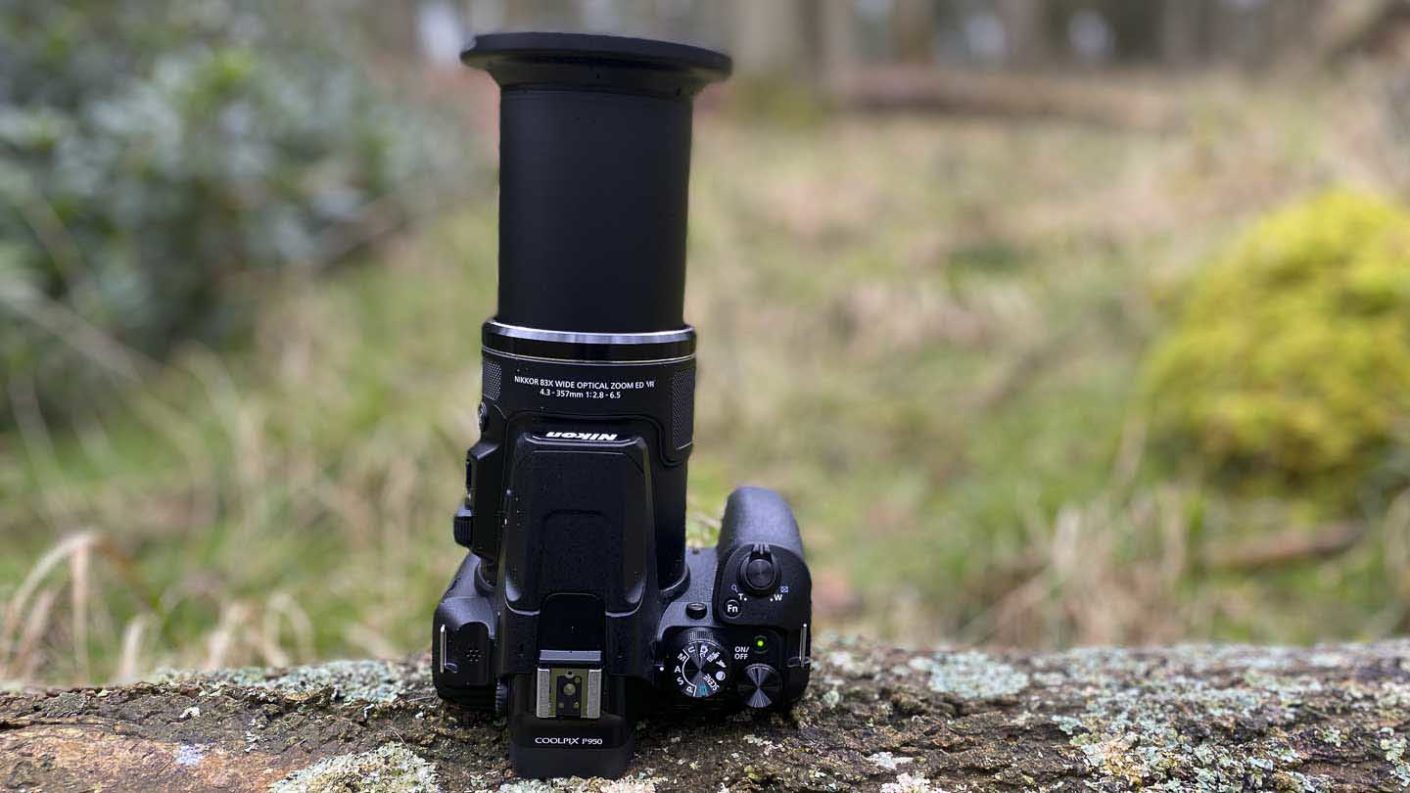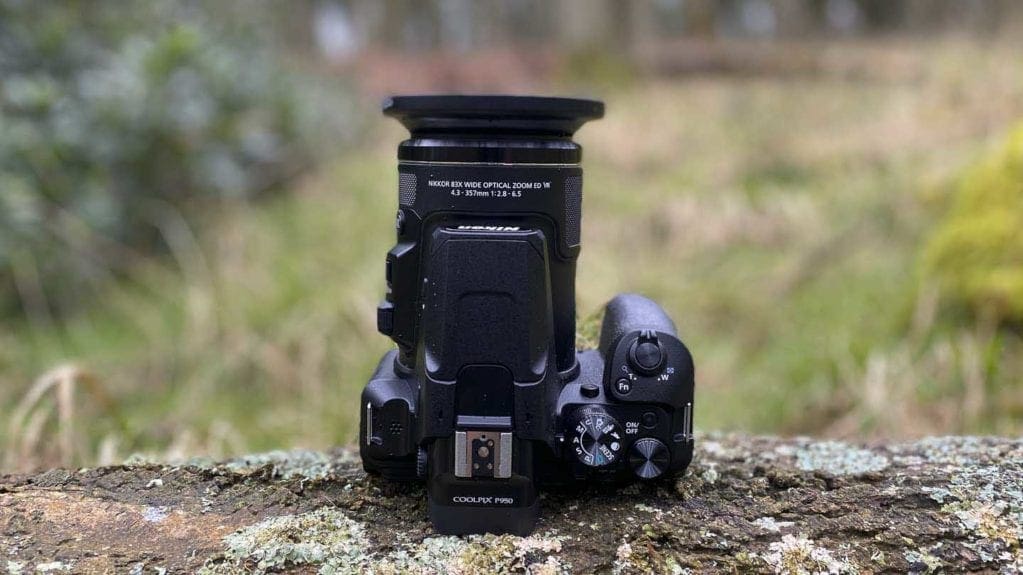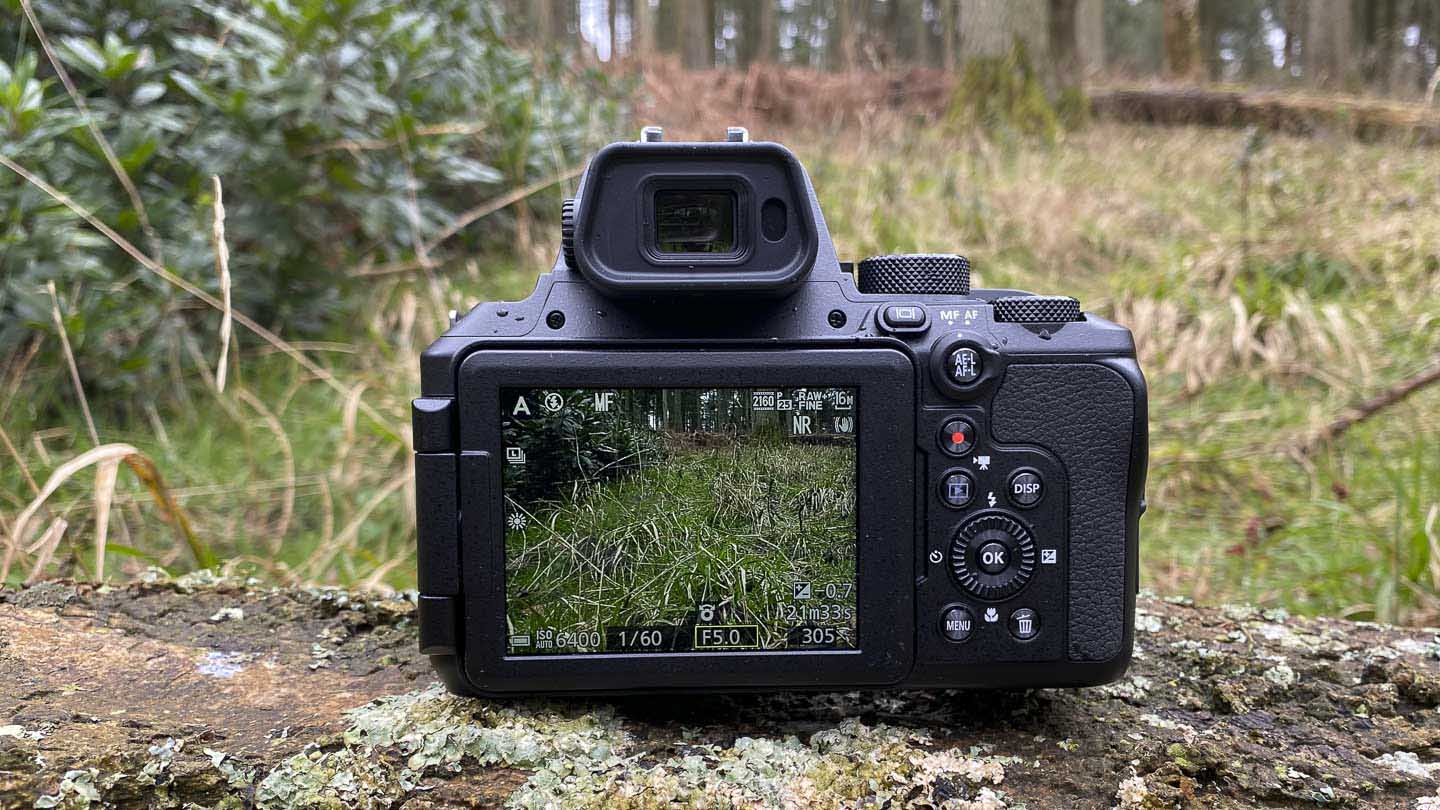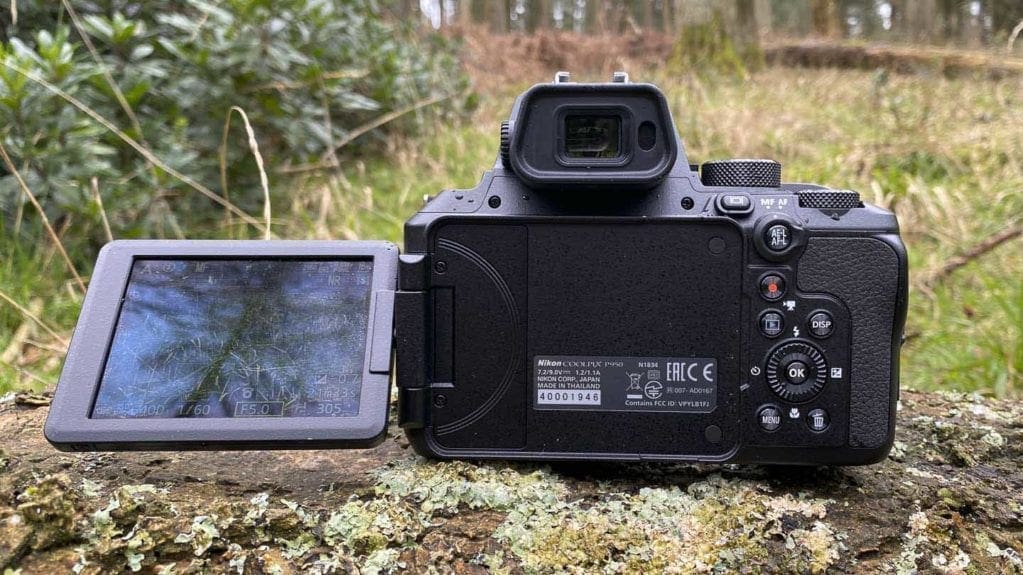When you have a camera with a long zoom range the first thing everyone does is zoom to the furthest point of the lens. And it’s amazing how far you can zoom when the lens goes to 2000mm.
However, it doesn’t take long to realise that even with the stabilisation system on, it’s hard to keep the camera steady enough in your hands. That means that unless you use a tripod, you’re likely to need to take a few shots of each subject to get the composition that you want.
You also become aware of just how much haze there is around distant objects.
Another issue is that it’s hard to keep track of moving subjects when you’ve zoomed in a long way. The snapback button is useful but it adds a delay to the capture process, so it’s not ideal with moving subjects.
I tried to get a few shots of some red kites as they circled above me but I found it impossible to frame them and get them sharp at the longest point of the lens.
I had more success with the moon!
Autofocus
I shot in a range of lighting conditions and I found the P950 gets most stationary subjects sharp quickly. It’s a different story with moving subjects though. I was able to get a few sharp images of my dog, but this isn’t the ideal camera to photograph him when he’s racing around.
I tried using the subject tracking mode on my dog and on red kites but it wasn’t able to keep up with either. Even when my dog was moving quite slowly, the AF point failed to stay with him.
Consequently, the Manual (normal) AF area mode proved to be the most useful. It allows you to target a fairly small area for focusing while still giving you a little scope for a little subject or camera movement.
Provided your subject isn’t wearing spectacles, Face Priority AF area mode is useful in social settings.
Nikon Coolpix P950 Image Quality
In good light when the P950 can be used at low sensitivity (ISO) settings, it produces that look attractive at sizes up to around 10×9-inches (25x20cm), or in some cases as big as 14×10-inches (36x25cm).
However, out of focus areas can look a bit smudged, so it depends upon where the focus point is in the scene.
As the sensitivity rises, Jpegs can become quite painterly. However, the raw files look a bit better. Even at ISO 320 you can see some speckling of luminance noise in raw files at 100% on screen, but they look sharper than the Jpegs.
If possible keep the ISO setting to 1600 or lower. If you’re shooting distant fine details you’ll probably want a lower ISO to get better resolution, so a tripod is advisable.
Shooting at the highest ISO values results in images that look like paintings.
Exposure
Even in manual exposure mode the P950 can preview the exposure and colour of an image before you capture it. That means you can ensure you have the right settings selected before you capture an image.
In most instances the matrix metering setting does a good job of assessing the exposure. However, the exposure compensation control is conveniently placed should you need it. I found the -0.3Ev was usually all the adjustment that I required.
One thing to be aware of when you’re setting the exposure is that the P950 doesn’t have a wide dynamic range. Consequently, images tend to have high contrast with deep shadows and bright highlights.
If you shoot to protect the highlights you’ll find that you can recover a little detail from the shadows, particularly if you shoot raw files.
Colour
Because of its huge zoom range, the P950 is most likely to be used outside and the Auto and Daylight white balance settings are a good choice.
There’s also a small collection of Picture Control modes (Standard, Neutral, Vivid and Monochrome) and each can be adjusted to taste.
In the Standard setting the camera tends to produce quite natural colours but in overcast conditions they can look rather drab. Again, shooting raw files can help as these give you the most scope for adjustment.
Video Performance
The Nikon P950’s 4K video footage is okay rather than excellent, it looks a little over-sharpened.
Also, the stabilisation can’t smooth out the bumps, shake and wobble that’s inevitable if you walk with the camera. If you want to shoot run and gun style, you’ll need some other form of stabilisation.
The sound from the internal mic is reasonably good, though an external mic is a sensible addition to your kit if you want decent audio in windy conditions and to eliminate operational sounds.
Flare
Even with the lens hood fitted, if the sun is in the frame or close to the edge of the frame, flare can be a significant problem.
I took care to ensure that the front element of the lens was clean, and clear of water droplets, but there’s flare in quite a few of my images when the sun is at 90-degrees to the lens.
Light seems bounce around inside the lens creating multiple hotspots and lowering contrast. On some occasions you can use it creatively, or reduce it by shading the lens with your hand, but at other times it ruins the image.
Read our guide to the best camera accessories







